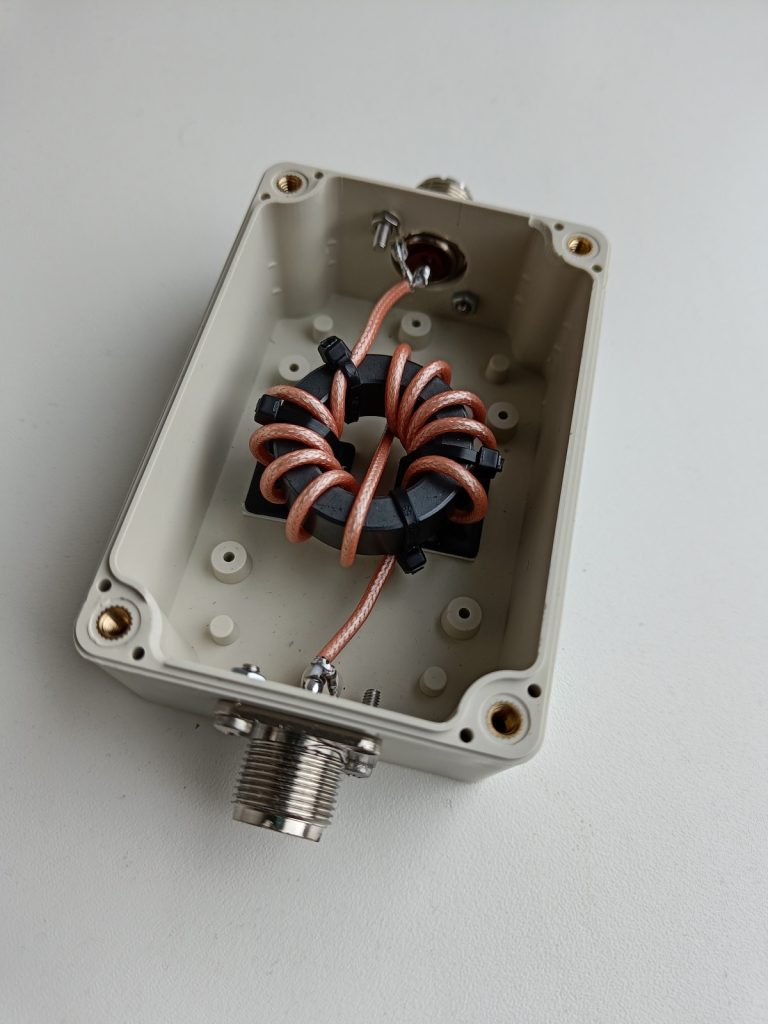A 1:1 balun (balanced to unbalanced transformer) is a crucial component in amateur radio setups, especially for connecting balanced antennas like dipoles to unbalanced feed lines such as coaxial cables. This article will guide you through the process of making a 1:1 balun, including the materials needed and step-by-step instructions.
Materials Needed
- Ferrite Toroid Core: A common choice is the FT-240-43 toroid.
- Enamel-Coated Wire: AWG 18 or similar.
- Coaxial Cable: RG-58 or RG-213.
- Heat Shrink Tubing: For insulation.
- Soldering Iron and Solder: For connections.
- Plastic Enclosure: To house the balun.
- Connectors: SO-239 or similar for coaxial connections.
Step-by-Step Instructions
- Prepare the Toroid Core:
- Take the ferrite toroid core and wind the enamel-coated wire around it. For a 1:1 balun, you typically need 10-12 turns. Ensure the turns are evenly spaced.
- Wind the Coaxial Cable:
- Cut a length of coaxial cable (about 3-4 feet). Strip the ends to expose the inner conductor and the shield. Wind the coaxial cable around the toroid core, following the same path as the enamel-coated wire. This helps in maintaining the balance.
- Connect the Wires:
- Solder the ends of the enamel-coated wire to the coaxial cable. The inner conductor of the coaxial cable should be connected to one end of the wire, and the shield to the other end. Use heat shrink tubing to insulate the connections.
- Assemble the Balun:
- Place the toroid core with the wound wires inside the plastic enclosure. Secure it with cable ties if necessary. Attach the connectors (SO-239) to the enclosure and solder the coaxial cable ends to these connectors.
- Test the Balun:
- Before using the balun, test it with an antenna analyzer to ensure it is working correctly. The impedance should be close to 50 ohms across the HF bands.

An Electrical diagram of a 1:1 Balun.

Conclusion
Building a 1:1 balun is a rewarding project that can enhance your amateur radio setup by ensuring efficient transmission and reception. By following these steps and using the right materials, you can create a reliable balun that will serve you well in your radio communications.
If you have any questions or need further assistance, feel free to ask! Happy building!
Tell us how can we improve this post?
Hi I am Marcus, MM0ZIF, a licenced Radio Amateur, Doctor of Musicology, amateur weather enthusiast. I over the years have been a Amateur Radio Tutor, Examiner, and a Regional Manager for the Radio Society of Great Britain.
This site is dedicated more towards Amateur Radio and Weather, with an angle on Technology too. I also maintain https://havenswell.com/ which is my other blog which is more aimed at cooking, hobbies and life in general as well as businness and networking.










